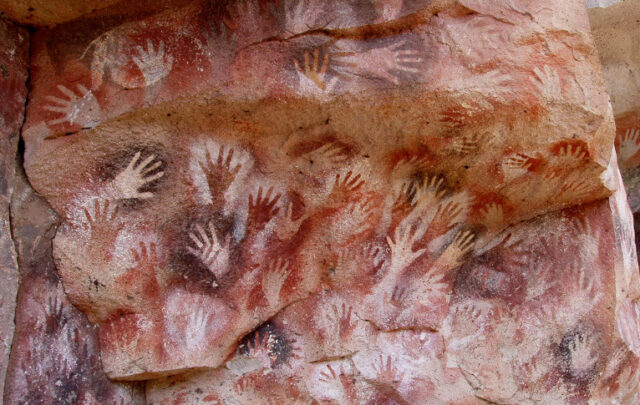That nowadays there are a growing number of research and archiving projects devoted to cataloguing specific types of participation and engagement activity is perhaps to be expected. The current context is one in which institutional breakdowns, crises, rapid technological change as well as restless variations in patterns of collective identification and belonging are now increasingly intersecting with our everyday lives. More and more people and organisations are trying out inventive forms of public participation in response. Participation Now is particularly concerned to illuminate the different forms that these emerging practices of participatory engagement take, as well as the wide variety of actors who are initiating them.
By bringing to life a collection of this kind we have three aims: to help track and animate the growing variability of the ways in which participatory public engagement initiatives are being imagined; to support the investigation of what is at stake in this emerging landscape of thought and practice; and to inform the broadening of an on-going current debate about the possibilities (and difficulties) of forms of participatory public engagement as mediums of public action, now and into the future.
The Participation Now project has already passed several milestones that we want to mark here, developmental and analytical. Having elaborated these, we want to close with some brief remarks on two issues at stake in this fast-changing contemporary landscape of participatory public engagement.
The first of the project milestones concerns the collection of initiatives on the Participation Now site. This week the collection reached 100 initiatives, identified through a combination of our own research and suggestions we’ve received from people. This is hardly intended to be a ‘representative’ sample of the constantly shifting and growing field of participatory public engagement (this would be impossible!), but the size of the collection now begins to make the activity of sorting through, comparing and analysing relationships between different initiatives a valuable one.
Then there is the design of the site. Participation Now’s recent design upgrade now offers users a much more accessible and immediate browsing and searching experience. Within the basic typology that allows the collection of initiatives to be filtered according to issues addressed (the what filter), individuals or organisations behind them (who), how organised, and scale of the project – wide-ranging as well as more specific forms of searching have been made easier to undertake. For those interested in exploring different links and relationships in this intriguingly diverse collection of initiatives, the aim is to offer as free-flowing an experience as possible.

We recently conducted some rudimentary quantitative analysis of how the initiatives map onto the four categories – what, who, how and scale – in the Participation Now typology. The what category ( first chart) shows the many different issues that people mobilise around, ranging from anti-discrimination, equality & social justice to research, knowledge & information – and even participation itself. Perhaps unsurprisingly, the most commonly addressed issue here is neighbourhood & community (35% of initiatives) – illustrating a tendency for participation projects to focus on people’s immediate context – and democracy, politics & representation (29%) – reflective of how participatory public engagement projects frequently are used to compensate for a perceived ‘democratic deficit’.
The who category (second chart) plots the diversity of actors and organisations behind the initiatives, ranging from artists & cultural organisations to researchers, scientists & educators and even for-profit enterprises. The results currently show a majority for what political scientists refer to as non-traditional actors, such as non-governmental organisations/charities (42%) and social movement activists (25%), while government and political parties are responsible for 17% and 2% of initiatives, respectively.
New information and communication technologies clearly have been key to the proliferation of these projects – as many as 55% of the initiatives in the Participation Now collection use online platforms. But several other modes of participation are evident too in the chart relating to the how category – with these ranging from ‘established’ forms of collective action such as organising & campaigning (13%) and public assembly (17%) to a diversity of special events (23%) and forms of protest & direct action (6%). A sizeable proportion of initiatives involve people through research & learning (24%) – this category includes both university-led public engagement with research projects and a variety of independent education initiatives.
Finally, while the majority of these hundred initiatives are local in orientation (51%) – underlining the relative ease of organising participatory action at this scale – a sizeable proportion also claim to operate at the national scale (31%) as well as at the transnational (11%) and global (19%) – the latter two perhaps reflecting a growing ambition to mobilise publics beyond the scales at which politics and social life have traditionally been imagined and organised.
Alongside this basic analysis of some of the characteristics of the 100 initiatives, we have begun to explore how they mediate forms of public action. This more qualitative research is still at an early stage. However, for the purposes of debate and discussion we’d like to report back on three themes emerging from this work that have caught our attention.
The first of these is public ‘representation’. One attribute that we have already found is common to many of the initiatives in this collection is that they offer people possibilities to organise around specific issues or problems. These include ‘the environment’ (e.g. EveryAware), ‘the media’ (e.g. The Media Co-op), ‘knowledge’ (e.g. Wikipedia) or ‘the city’ (e.g. Open Streets). Nevertheless, there are significant differences in how these initiatives offer people possibilities to articulate a position and enact forms of representation in different settings.
Some provide tools to help individual members of the public represent themselves in relation to others (e.g. Connected Citizens, Life in a Day), while others support the organisation and development of representative public networks (e.g. People’s Voice Media), or the representation of territory-based (local, national or transnational) collectivities (e.g. e-Democracy.org).
The technologies and techniques being used to calculate, document and represent the publics that are being convened across these settings are different too. In part, these differences seem to relate to whether the forms of representation are being resourced and underwritten by pre-existing institutions, such as co-ops (e.g. Rochdale Boroughwide Housing), unions (e.g. Unite Community Membership) or local government (e.g. Barnet Pledgebank), or performed at a distance from such pre-existing forms of organisation and therefore more easily able to offer people the possibility of ‘new’ spaces (e.g. EuroPie, Radical Library Camp), methods and technologies (e.g. Simpl Challenges) or forms of assembly (e.g. Democracy Max). Some initiatives also offer to represent hitherto hidden publics or histories of local, or national, public life (e.g. Restore/Restory, Mapping Memories).
Then there are those that don’t set out to represent people at all, but rather focus on representing certain ‘things’ in the public sphere, including trees (Treezilla), ‘the earth’ (Earth Speaks), and ‘the universe’ (Galaxy Zoo).
The second theme we see emerging is ‘self-organisation’. A spectrum of ways in which participation is cast as a medium for voluntarary public action is readily discernible. At one end of this spectrum we have started to place initiatives that offer to rationalise public engagement and make the participatory self-organisation of publics more efficient. At the other end we are placing initiatives that seem more focused on enriching processes of engagement and participation. We’ve noticed that the former are often cast as ‘toolkits’, technological ‘platforms’, or ‘methods’ that offer to support various kinds of ‘deliberation’, ‘consensus-building’ or ‘decision making’ (e.g. Puzzled by Policy, Planning for Real). The latter, by contrast, emphasise the importance of making the experience of engagement and participation a more intensely affective, relational, imaginative or creative one.
These initiatives can work through genres that involve the body, sound or moving images and sometimes also make use of relational media such as festivals (100 in 1 day), bar-based informal discussions (Drinking Liberally), café style conversations (World Café) or participatory art installations (These Associations). In these ways such initiatives seem to be offering people possibilities for forms of creative and imaginative self-organisation, as well as processes that may potentially affect forms of public change beyond the bounds of these events.
The third and final theme that has caught our attention is ‘identification and belonging’. This overlaps with the first theme of ‘representation’ but relates more specifically to the myriad of assumptions that different kinds of initiatives make about contemporary publics’ needs, identifications and capacities; ties and relationships; desires and preferred modes of association.
Assumptions about people’s identifications and desires for belonging also vary quite considerably across the collection of initiatives, with some (e.g. Occupy London, UK Uncut) assuming that people are almost entirely disenfranchised from mainstream political institutions and conventions, and others assuming people will now identify primarily with less overtly political genres and modes of public action (e.g. One & Other, Complaints Choir).
By beginning to explore the initiatives in the Participation Now collection as sites of possibility which offer openings for new forms of public action, we are hoping to build on a long history of research, literature and debate about the topics of participation and public engagement. We end this post by highlighting two of the many issues we think will be at stake as we investigate these sites and possible openings for new forms of public action in more depth:
- The first is the issue of how to research what is being produced by the many different initiatives in the Participation Now collection. Our preliminary analysis has started to trace patterns in the different ways that initiatives are set up. Our aim has been to pinpoint a set of similarities and differences in the possible forms of participatory public engagement. However, these initiatives, in common with other forms of participatory public engagement, also offer openings for participants to enact forms of production. Furthermore, there is always the possibility that such initiatives will somehow be productive beyond the bounds of the immediate settings and interactions through which they were initiated – whether by intervening in a pre-existing context, or, say, in the configuration of a specific public issue or problem. What is the best way to explore the effects of all these many, varied and highly distributed forms of production? Should researchers such as ourselves participate or intervene in these processes? If so, how?
- One further issue that we think is at stake here relates to the first, but specifically concerns how different versions of participatory public engagement may, or may not, gain legitimacy over time. What we already begin to discern, as we look across the collection of initiatives, are a range of different imaginaries of ‘progressive’ public-ness. Rather than focusing our research efforts primarily on investigating the efficiency of these participatory techniques, we’re interested in exploring some of these imaginaries of ‘progressive’ public-ness in more depth.
For example, in precisely what ways are different initiatives working to re-structure relationships between individuals, between individuals and groups, between groups and organisations, or between publics and issues? How are initiatives in the Participation Now collection working to redistribute resources such as technology, information, time, expertise or money? What levels of public appeal do different imaginaries of ‘progressive’ public-ness have?
Our hope is that, over time, Participation Now can become a site where such questions can be further explored not only by researchers, such as ourselves, but by others too. This is of course a very ambitious aim. But it arises from the recognition that the stakes are high in this terrain and that there is therefore a need for spaces that can support social networking, debate, participatory forms of research and experimentation among those who are interested or involved in this field on an on-going basis.
If you’re interested or involved in participatory public engagement projects and you have a view about current activities, future possibilities or obstacles to the further development of this field, we’d love to hear from you. There are now a number of different ways of being part of the Participation Now project:
– Join the conversation via Twitter: @NowParticipate
– Comment on this blog-post via the OpenLearn or openDemocracy/Participation Now websites;
– Contribute a short piece to the openDemocracy/Participation Now site;
– Let us know about a participatory public engagement initiative that we can add to the Participation Now collection.
The Participation Now project emerges out of a number of years of research, at the Open University’s Centre for Citizenship, Identities and Governance (CCIG), concerned with investigating changing configurations of ‘the public’ (click here for more info). Participation Now was first developed in prototype form as The Experimental Democracy Console in 2010, but has since been significantly developed under the auspices the Open University funded Creating Publics project; an initial version of Participation Now went online in Spring 2013 and is now being developed in collaboration OpenLearn. Work on Participation Now is also supported with funding from the RCUK-funded Open University Public Engagement with Research Catalyst project.





